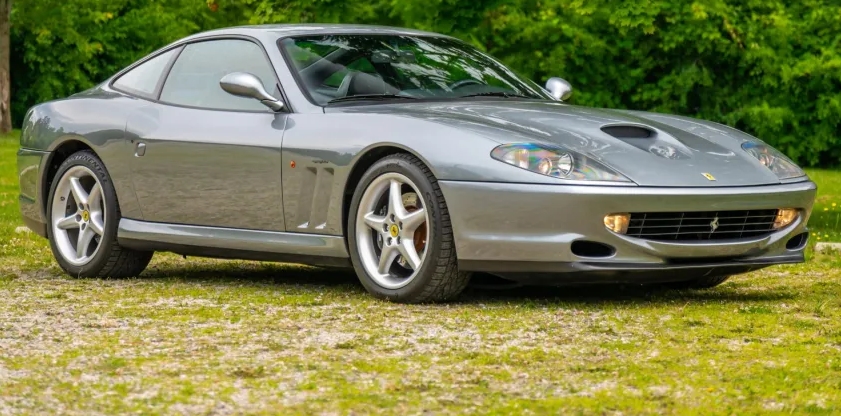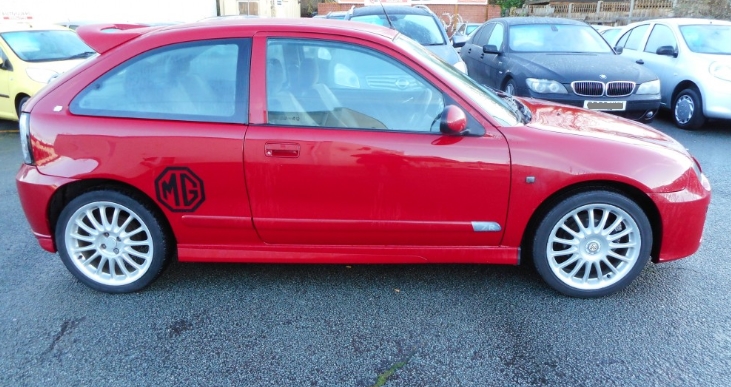The Evolution of Ferrari’s V12 Grand Tourers: 550 599
Ferrari has long been synonymous with high-performance, luxury, and Italian craftsmanship. Among its storied lineup, the 550 Maranello and 599 GTB Fiorano stand out as iconic front-engine V12 grand tourers that showcase Ferrari’s engineering prowess and design evolution over the years. This article traces the development of these models, their various versions, and the key milestones in their production history.
The Ferrari 550 Maranello (1996–2002)
Introduction and Development
Launched at the 1996 Geneva Motor Show, the Ferrari 550 Maranello marked Ferrari’s return to front-engine V12 grand tourers after the demise of the 512 M. Named after the Maranello region, Ferrari’s home base, the 550 was conceived as a modern evolution of classic Ferrari GTs, blending performance, comfort, and style.
Design and Engineering
Designed by Pininfarina, the 550 featured a sleek, timeless silhouette with a long hood, muscular haunches, and a refined interior. Under the hood, it was powered by a 5.5-liter (5,473 cc) Tipo F133 G V12 engine, producing 485 horsepower at 7,000 rpm and 568 Nm of torque. This engine was derived from Ferrari’s Formula 1 experience, emphasizing high-revving capability and smoothness.
Production and Models
The Ferrari 550 Maranello was produced from 1996 through 2002, with approximately 4,048 units built. Its production spanned:
- Standard 550 Maranello (1996–2002): The baseline model, featuring the 5.5L V12, 6-speed manual transmission, and luxurious interior options.
- 550 Barchetta Pininfarina (1998): A limited-edition open-top variant celebrating Ferrari’s 50th anniversary, with only 448 units produced. It had a slightly modified chassis and a more aggressive styling, emphasizing open-air driving pleasure.
Trim Levels and Special Editions
While the 550 Maranello was primarily offered as a single model, Ferrari created several special versions:
- 550 Maranello GT: A more personalized version with bespoke interior options, though not a distinct trim level.
- 550 Maranello Challenge: A racing-inspired variant with modifications for track use, including reduced weight, upgraded brakes, and revised aerodynamics, though production numbers were limited and primarily aimed at enthusiast owners.
Transmission Options
Throughout its production, the 550 was exclusively available with a 6-speed manual gearbox, emphasizing driver engagement. Ferrari did not offer an automatic transmission for the 550, aligning with its focus on high-performance driving.
Performance
The 550 Maranello could accelerate from 0–60 mph in approximately 4.4 seconds, with a top speed of around 199 mph (320 km/h). Its combination of power and refinement cemented its status as a classic grand tourer.
The Ferrari 550 Maranello’s Legacy and Transition
While the 550 was highly regarded, Ferrari sought to evolve its lineup to meet modern demands, leading to the development of the next-generation model, the Ferrari 599 series, which debuted in the mid-2000s.
The Ferrari 599 GTB Fiorano (2006–2012)
Introduction and Development
Unveiled at the 2006 Geneva Motor Show, the Ferrari 599 GTB Fiorano was a technological leap forward, representing Ferrari’s flagship front-engine V12 GT coupe. It was named after Ferrari’s Fiorano test track and was designed to blend high-performance with daily usability.
Design and Engineering
Designed again by Pininfarina, the 599 featured a more aggressive, modern aesthetic with sharper lines and aerodynamic enhancements. Under the hood, it housed a 6.0-liter (5,999 cc) Tipo F140 C V12 engine, producing 611 horsepower at 8,250 rpm and 607 Nm of torque.
The 599 employed advanced technologies such as:
- F1-Trac traction control system
- Magnetic Ride Control adaptive suspension
- Variable Geometry Exhaust System
Production and Variants
Produced from 2006 to 2012, approximately 13,000 units of the 599 GTB Fiorano were built. Several variants and trim levels were introduced during its lifecycle:
- 599 GTB Fiorano (2006–2012) The base model, featuring a sleek coupe profile, front-engine V12, and a 6-speed F1 automated manual transmission with paddle shifters. It was renowned for its handling, speed, and luxury.
- 599 GTO (2010–2012) The Gran Turismo Omologato (GTO) was a high-performance, track-focused variant, limited to just 599 units. It featured:
- Power increased to 661 horsepower
- Reduced weight through extensive use of carbon fiber components
- Upgraded aerodynamics and suspension
- Unique badging and interior details The GTO was Ferrari’s most powerful front-engine V12 at the time, capable of 0–60 mph in approximately 3.35 seconds and a top speed of over 208 mph.
- 599 SA Aperta (2010) A limited-edition open-top version produced to celebrate Ferrari’s 80th anniversary, with only 80 units built. It combined the 599 GTB chassis with a bespoke open-air experience and unique styling cues.
- 599XX (2010) An exclusive track-only prototype designed for Ferrari’s racing development program. It featured extensive aerodynamic modifications, racing tires, and engine tuning, emphasizing performance over comfort.
Transmission and Drivetrain
The 599 series was exclusively equipped with Ferrari’s F1-style semi-automatic transmission, offering rapid gear shifts and driver engagement. Rear-wheel drive remained standard.
Performance
The standard 599 GTB Fiorano could accelerate from 0–60 mph in approximately 3.7 seconds, with a top speed of around 205 mph. The GTO variant, with higher power and reduced weight, improved these figures significantly.
The Evolutionary and Technological Advancements
Between the 550 Maranello and the 599 GTB Fiorano, Ferrari made significant leaps in technology, design, and performance:
- Engine Evolution: From the 5.5L V12 producing 485 hp to the 6.0L V12 with over 600 hp, reflecting advances in engineering and materials.
- Transmission: Transition from a traditional manual gearbox (550) to Ferrari’s F1-style automated manuals, enhancing shift speeds and driving dynamics.
- Chassis and Suspension: Introduction of magnetic ride control and electronically controlled suspensions improved handling and ride comfort.
- Aerodynamics and Design: From the flowing, classic lines of the 550 to the sharper, more aggressive styling of the 599, aligning with modern aerodynamic principles.
- Limited Editions and Customization: Ferrari’s tradition of creating bespoke, limited-run models like the Barchetta, GTO, SA Aperta, and XX series reflected an emphasis on exclusivity and bespoke craftsmanship.
.
THIS might be a great place to get your new car from!
Or for those who are into the “car flipping” business, here’s an excellent resource for you!

.
Conclusion
The evolution from the Ferrari 550 Maranello to the 599 GTB Fiorano encapsulates Ferrari’s relentless pursuit of performance, innovation, and design excellence. The 550, with its classic front-engine V12 layout, was a tribute to Ferrari’s grand touring heritage, while the 599 represented a modern, technologically advanced iteration capable of matching contemporary supercar standards.
Throughout their production runs, these models have maintained Ferrari’s reputation for crafting vehicles that combine raw power, refined handling, and aesthetic beauty. Limited editions and special variants have further cemented their statuses as timeless icons, highly prized by collectors and enthusiasts worldwide.
As Ferrari continues to evolve, the lineage of the 550 and 599 models remains a testament to the brand’s enduring commitment to excellence in the realm of high-performance, front-engine V12 grand tourers.
Note: This overview provides a detailed summary of the main models, variants, and key milestones in the evolution of Ferrari’s V12 front-engine GT cars, from 1996 through 2012. For more technical specifications or custom configurations, consulting official Ferrari documentation or dedicated enthusiast resources is recommended.







